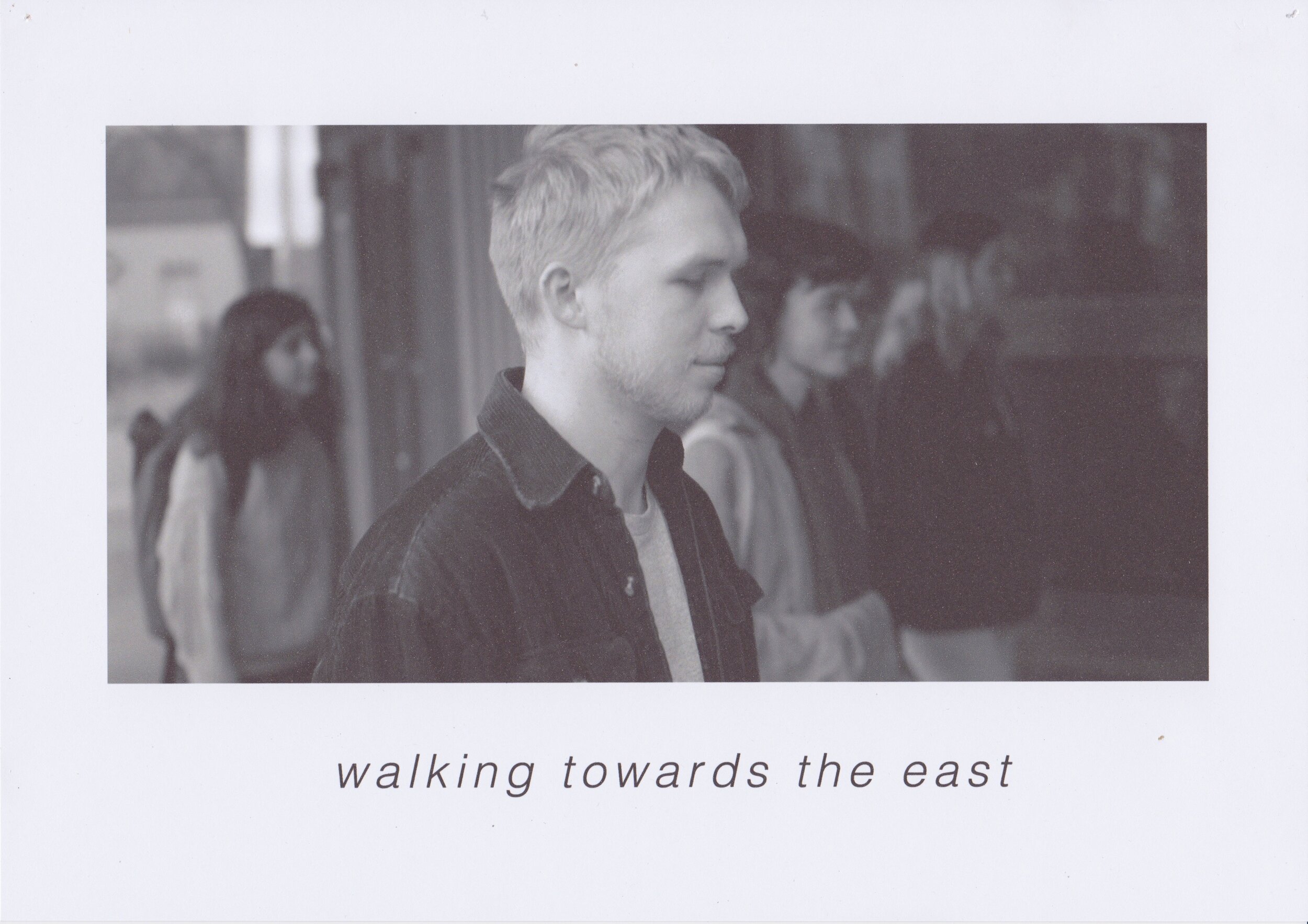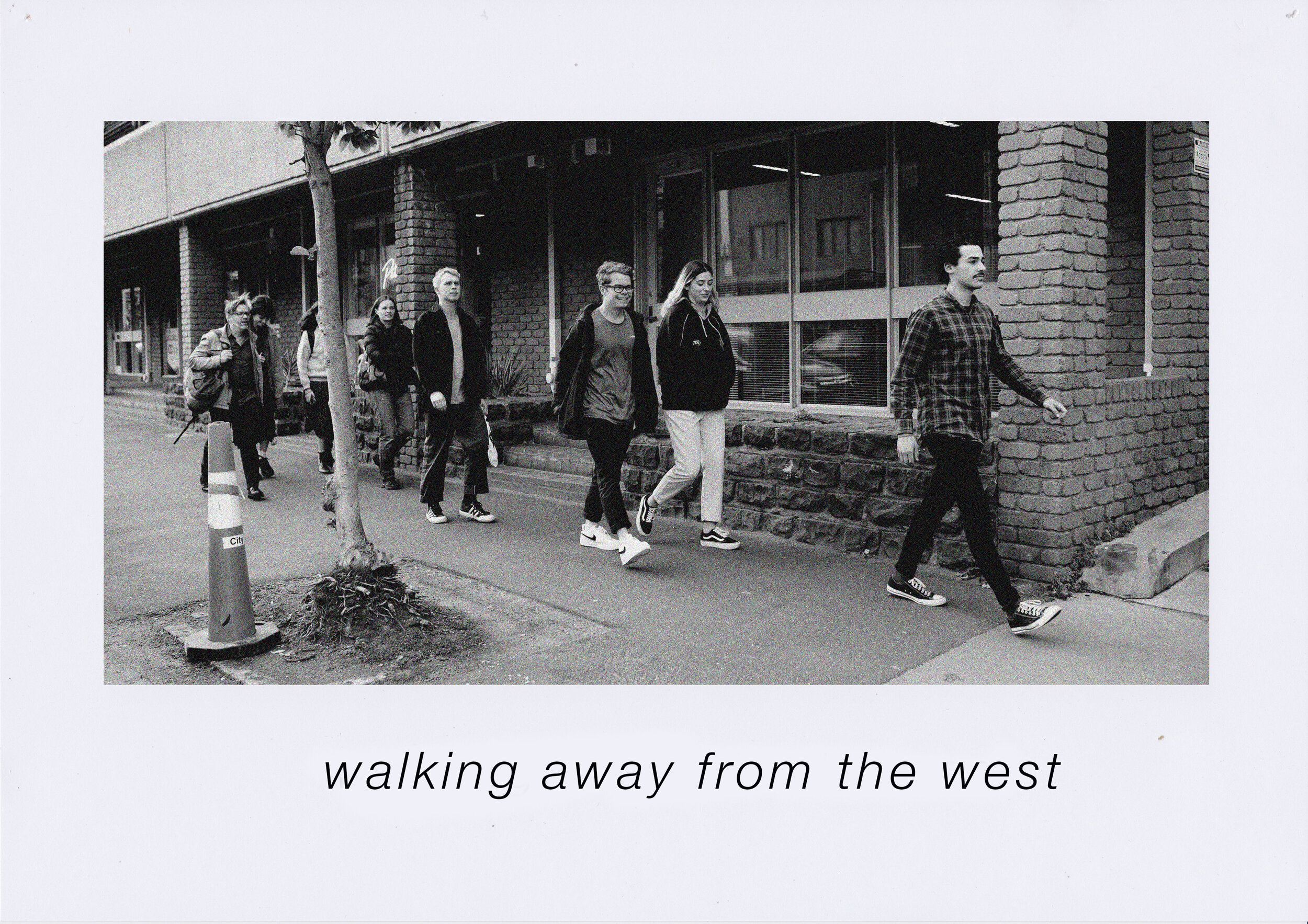
An Asymmetrical Composition in the Perception of Walking
?????



An Asymmetrical Composition in the Perception of Walking, 2019, Guided Walk, Gertrude Street Fitzroy
Considering a movement of walking across space requires a recognition of the movements that occur before and after any singular movement. Recognizing two points that exist on either ends of a movement allows one to isolate a single movement among the many. To recognize two points to which frame a movement we must consider the stillness that exists in opposition to movement before it has begun and once it has concluded. In establishing boundaries of stillness, we can discern an acceleration; a departure, and a deceleration; an arrival. The establishing of these two points results in a framed line of movement between a departure and arrival.
The issue in considering the composition of walk in this manner arises in the acknowledgement of the stillness that occurs along the line. The line of movement, framed by two points of stillness itself holds an infinite number of still points. Cracks in a wall, a café seating arrangement, a nature strip, all of which are spaces in themselves and are worthy points of stillness. Yet when experienced they are not still, the crack in the wall moves past the walker. The still moments exist externally and in disregard to the line. The line is an internal construction of the walker. The walker moves past the points along the line, whereby viewing them through the lens of movement, groups the points in accordance to the “still-movement-still” composition, causing the points to vanish into the singular line of movement, where the only stillness that remains is that of the internally established; the departure and arrival.
Within the walker exists an inner geography, a map they have constructed of space prior to their movement. In a sense, they have already been to the arrival point prior to their arrival and their expectations of the point ground its location in their inner geography. This grounding of the arrival point creates a magnet like effect as one transfers an internal point to the physical world. It is in this cohesion of an internal map with that of the exterior physical world in which we might describe spatial awareness.
There is a perceived weight to the arrival point, this weight secures the walker in motion. It is in this weighted point that a walker can forfeit a primary attention to their spatial awareness, the mind can be allowed to drift from the action of walking and the individualities of spaces along the line can be appreciated. While still spaces along the line can be noticed and appreciated it remains that the arrival points influence can still be felt across the line. Even when not consciously focused on the arrival points masks points in the line, to which any space is seen relative to its their spatial proximity to the arrival point.
It is this dominance of the arrival point that results in a disparity between the objective and balanced composition the still-movement-still composition and the walker’s reception of the composition which is experienced asymmetrically with skewed focus on the arrival point.
This occurrence seems fitting if we consider the way in which our bodies walk, our eyes are positioned at the front of our heads and while we look from side to side, we always return our gaze to that which is in front of us. That our feet remain in a constant state of movement our proximity to the arrival point constantly condenses with the passing of time. This linear correlation of time passing with our position to an arrival point encourages viewing the arrival point to be synonymous with the future.
If we are to accept the arrival points synchronization with the future, it could also be posed that the departure point acts as a reference point to the past. In determining the manner to which we consider spatial points along a line of movement we may attempt to resist the weight of the arrival point and lean back to the point of departure. In doing so the spatial points along the line may be seen by their proximity relative to where we have come from to which they can serve to balance our reception of a still point when in movement and simultaneously meditate on the roles of the past and future in constructing the present moment.